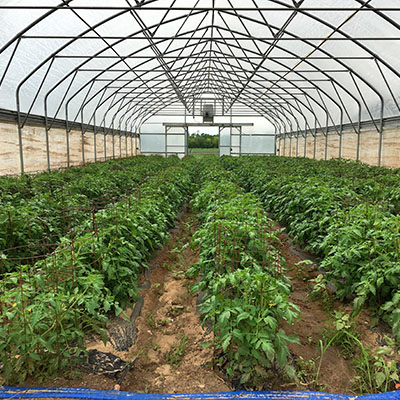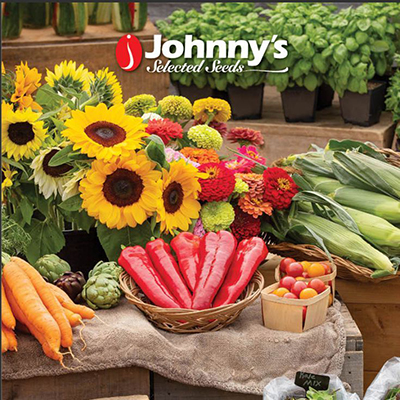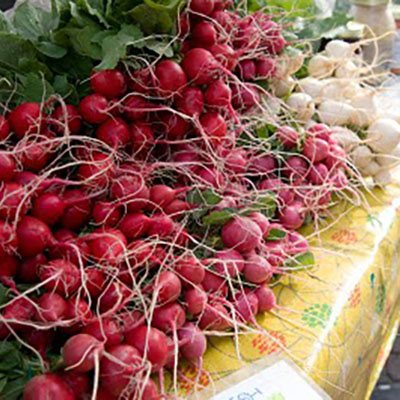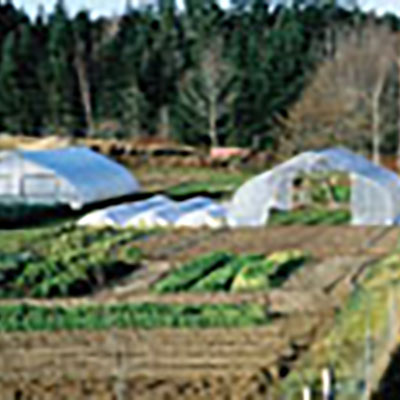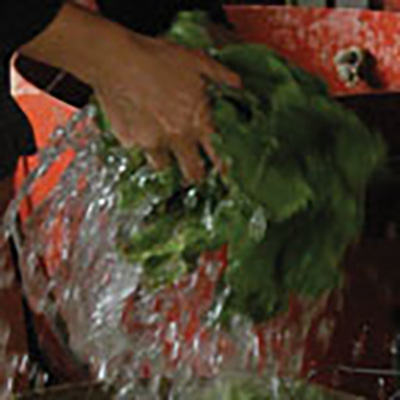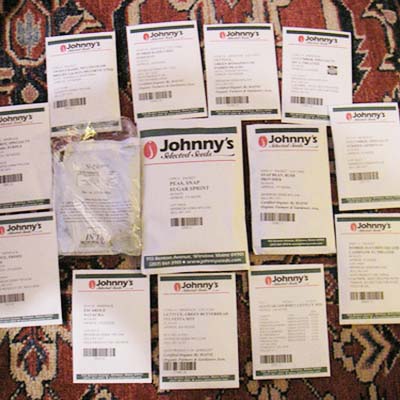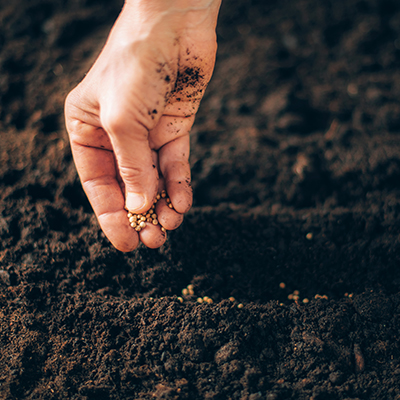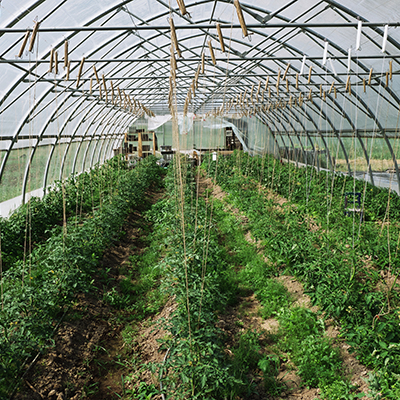Subscribe to Growing for Market for more great ideas about growing and marketing!
For more topics in the series, click on Market Farming Basics in the left column.

As farmers markets extend their seasons and the demand for local food goes year-round, many growers are creating value-added products to take advantage of the new marketing opportunities. The term “value-added products” encompasses a wide array of farm products, from specialty foods to non-food items such as straw bales and wreaths. In this issue of the JSS Advantage, we’ll focus on creating value-added food products as a way of diversifying your farm’s offerings, extending your selling season, and improving your bottom line.
First, identify potential products. They should be food items that you know and love, because your enthusiasm will be crucial to your marketing success in the future.
Maybe you have a great family recipe for pepper jelly; or a special love of pesto; or you’re part of the fermentation generation. Choose foods that interest you, and think about a few variations that could be developed into a multiple product line, such as basil pesto, cilantro pesto, and parsley pesto. Experiment in your home kitchen to devise recipes that are delicious, economical, and use ingredients from your own or other local farms. In the interest of simplicity, stick to one type of food process, such as canning, freezing, drying, or baking.
Once you’ve settled on a product or several products, do a brief analysis of the main factors involved in writing a business plan for your value-added enterprise. Those include: analyzing your markets; assessing your resources; exploring the legal and regulatory issues involved; and determining the profit potential for your enterprise.
The market assessment
Research trends in your product category; are sales increasing, holding steady, or declining? Foods definitely follow trends and you don’t want to enter the market with a product that is falling from favor.
Identify your competition, and analyze how your product will be different. If your product is a relatively new category, such as fermented foods, there may not be much competition — but you may have to do educating and sampling to stimulate sales. If the product is a familiar category, such as jam or salsa, you will have to differentiate it from existing products. Look locally and on the internet for artisanal foods similar to the products you’re considering and find out how much they sell for. This information will be critical to deciding whether you can make money on the product.
Identify your target customers and how you will reach them. The obvious markets for local foods are farmers markets and natural foods grocery stores, but that may not be enough. Many supermarkets buy locally produced food products, but have very specific requirements for delivery locations, schedules, volume, food safety certification, and product liability insurance. It’s important to understand all the ramification of selling into a specific marketing channel before building a business plan around it.
The internal assessment
Next in your planning process should be an assessment of your own resources, tangible and intangible. In the realm of intangible resources, you have to ask yourself whether you really have the time and skills for the enterprise, or whether you will have to hire additional staff or outsource some aspects of the product marketing.
As for tangible resources, consider your product ingredients and what you’ll need to do to ensure sufficient volume, either from your own farm or other local farms. You will need to know the costs to make your products, so aim for close price estimates when finding suppliers.
Perhaps the biggest issue for a food product is where it will be produced. You have two choices: to do it yourself or to hire a contract packer, also known as a co-packer.
On the DIY route, your home kitchen is not going to be allowed for anything other than baked goods (and some health department regulations may require a commercial kitchen for those). Building your own commercial kitchen is a vast expense that you probably want to avoid during your start-up phase. If your products are a success, you might want to revisit the issue but in the beginning, look elsewhere for a facility.
One of the biggest trends in the local movement movement right now is the development of food hubs, which often include shared commercial kitchens that local growers may use. Commercial kitchens may also be available for rent at churches, the county Extension office, senior centers, and restaurants.
Co-packers are manufacturing companies that handle the production of products and may be able to also help with analysis, labeling, storage, and shipping. The benefit of using a co-packer is that these companies have the right equipment, food safety protocols, and experience to get the product made quickly. But choosing a compatible co-packer is essential, especially if you have your own proprietary recipes and want to use ingredients from local farms.
Laws and regulations for value-added foods
One of the biggest hurdles in starting a food enterprise is learning the regulatory environment. You may need to register with the U.S. Food and Drug Administration, be inspected by your state health department, attend a training program, and more. You may need nutritional analysis labels, sell-by date stamps, and UPC codes. For each type of food process and each marketing plan, different sets of regulations apply.
If all that seems a bit discouraging, take heart. There are many resources available to help the farm entrepreneur develop a value-added product. Your first stop should be your county Extension agent, who can direct you to the appropriate person or department at your land-grant university; many universities have food science departments that specialize in helping citizens develop new products. They can often provide assistance for every aspect of value-added processing, from scaling up small-batch recipes to doing the nutrition analysis. They may be able to guide you toward co-packers, suppliers, label designers, and marketing professionals.
In addition, there are many resources online to help familiarize you with this new body of knowledge you’ll have to learn. A good starting place, with many references to other publications, is at ATTRA, the National Sustainable Agriculture Information Service, with the publication “Adding Value to Farm Products: An Overview.” https://attra.ncat.org/attra-pub/summaries/summary.php?pub=270
Another is the Northeast Center for Food Entrepreneurship at Cornell University: http://necfe.foodscience.cornell.edu/
The money angle
Once you have a clear understanding of what will be involved in creating, manufacturing, and marketing your product, crunch the numbers carefully to make sure you can make money. Just as you would for a farm crop, create an enterprise budget that accounts for direct costs such as raw materials, labor, including your own time, and overhead costs such as higher insurance rates and utility bills.
After your initial research, if the future still looks bright for your product idea, you will find great advice on creating a business plan in a publication from Oklahoma State University. http://pods.dasnr.okstate.edu/docushare/dsweb/Get/Document-981/AGEC-909web.pdf
One final resource that can help bring your planning to fruition is your local Small Business Development Center. The staff there is knowledgeable about financial and marketing aspects of business start-ups and will be able to help you with cash flow planning, seeking financing, and staying on budget.
Visit Johnny's Selected Seeds for more free information about growing produce, herbs, cover crops and flowers.
Subscribe to Growing for Market for the latest news and ideas.
Reprinted from JSS Advantage October 2012

